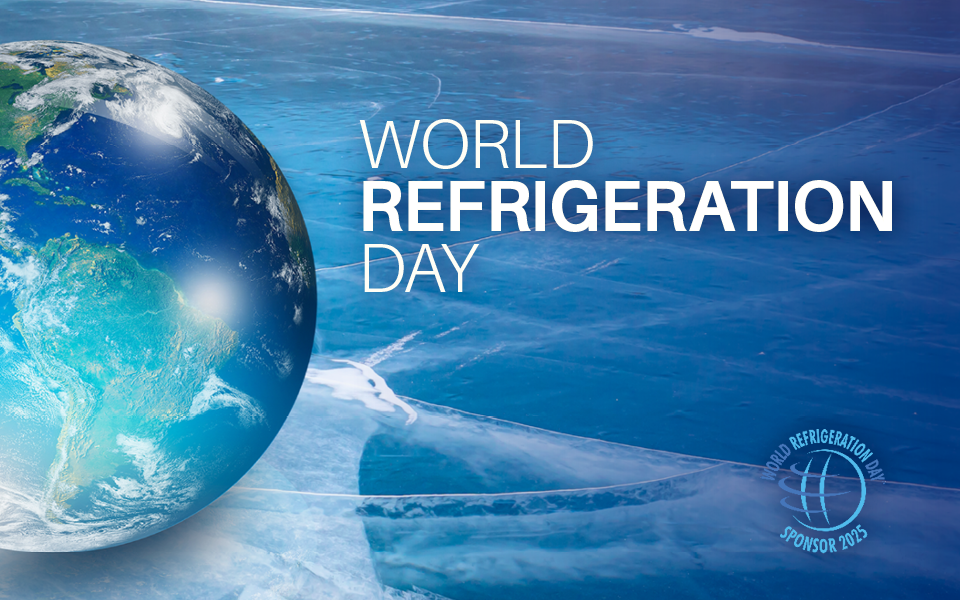*On June 1, 2023 Emerson’s Climate Technologies business became a new standalone company – Copeland. Though our name has changed, we are building on more than a century of HVACR innovation and industry leadership, and Copeland continues to offer the same products, industry stewardship, and learning opportunities you’ve grown to trust. Information found on this webpage posted before June 1, 2023 may contain our old name or branding, but you can be at ease knowing it was created with the knowledge and expertise of Copeland.
Emerson is applying our expertise in commercial refrigeration and AC toward building predictive models for a variety of applications and architectures, a foundation for the emerging artificial intelligence technologies in the HVACR industry. We recently discussed our work in ACHR News magazine, “The Impact of Artificial Intelligence on HVACR.” You can read the full article here.

The building blocks of artificial intelligence (AI)-enabled equipment and systems in HVACR are already well in development: next-generation sensors and controllers, increasingly sophisticated predictive analytics, and machine-to-machine learning (M2M) software, cloud data storage and the growing implementation of the internet of things (IoT). These tools are already providing opportunities to improve comfort, save energy, reduce maintenance costs and extend equipment life, all while helping end users better manage their operations.
But integrating these tools into true AI solutions — data- and algorithm-driven applications that will enable systems and equipment to learn and automatically perform critical tasks without human intervention — is a challenge that will require a deeper understanding of the complexities of equipment, HVACR architectures and building systems.
At Emerson’s innovation centers and in customer field trials, we’re tackling this challenge head on — but methodically. Rather than simply throwing more technologies into the mix, we’re leveraging our deep refrigeration domain expertise to simplify complexities and uncover insights into the industry’s most common refrigeration scenarios. We are in the process of understanding how deeply AI could be implemented into equipment and buildings, and how effectively it could help solve the industry’s biggest challenges.
As stated in the article, Emerson is researching how some newer AI-related technologies can be utilized for more advanced services, such as detecting problems faster and pinpointing which actions need to be taken. For example, we are already incorporating some AI-related technologies into equipment when we learn they add value, such as sensors that warn of refrigerant leaks in supermarket refrigerants.
However, delivering on the promised value of AI — autonomous predictive analysis and control of HVACR equipment and even entire building environments — will require more than simply installing connected sensors and devices, transmitting clouds of data, and creating libraries of algorithms. As the automobile industry has learned, building a self-driving vehicle is a far more complex undertaking than it appears. This example is important to keep in mind when considering the inherent complexities and diversity of commercial refrigeration applications.
A typical commercial refrigeration system consists of many interdependent components — often from multiple suppliers — with potentially diverse data sources. The proliferation of system architectures and refrigerants has resulted in an ever-expanding diversity of applications. This makes data modeling and defining predictive algorithms difficult. At Emerson, we believe that the development of AI in HVACR will grow as an iterative process, via data processing performed at the equipment level — with tighter integration of sensors and controllers providing richer data to cloud- and IoT-based services. These services provide both real-time alerts and historical trends of equipment performance under a given set of conditions — including indications of potential failures.
These data sets are the foundation of the next level of AI, enabling predictive maintenance models that will anticipate problems and maintain optimum conditions across a defined range of variables. Reaching that point will require generating sufficient historical data detailing the operation, failures and problems of equipment and components. And while much of this data is available today, new sensors may also be required to provide more advanced predictive capabilities.
Relatively speaking, the use of AI in HVACR equipment and controls is still in its infancy. But we’re working to accelerate its advancement to help our industry reap its potential benefits, including: improved reliability, energy savings, prolonged asset life and, of course, predictive analytics. As more AI-related technologies arrive in the HVACR space, we’ll start to fully understand the significant benefits and valuable data they are capable of providing.

Celebrating World Refrigeration Day 2025
Electrical component considerations for A2L system safety Heating, ventilation, air conditioning...
A2L Refrigeration Overview — Systems, Safety and Servicing Considerations
*On June 1, 2023 Emerson’s Climate Technologies business became a new standalone company –...
Servicing the Next Generation of Lower-GWP Refrigerants
*On June 1, 2023 Emerson’s Climate Technologies business became a new standalone company –...
